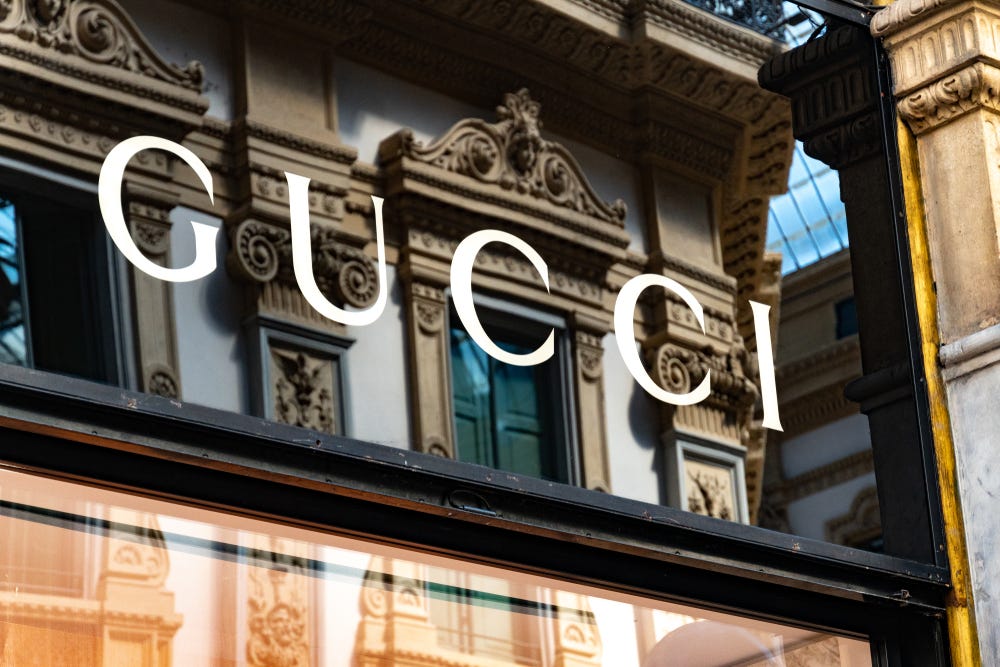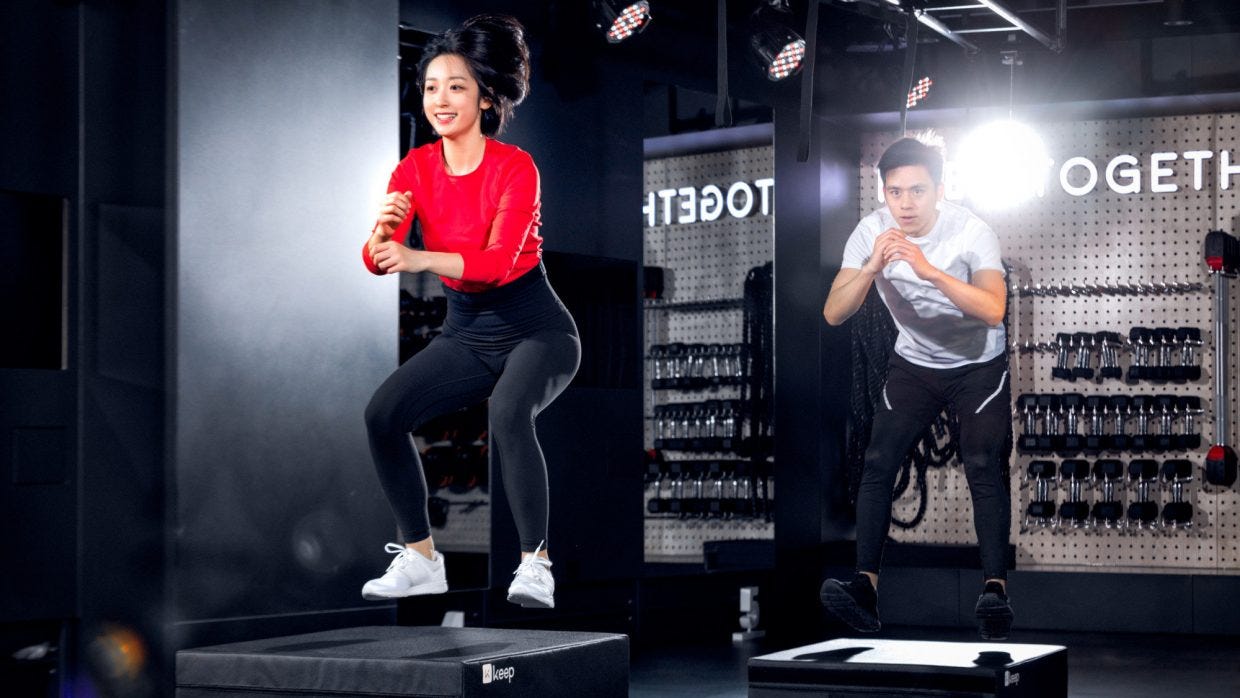Future Tech China: What Douyin's Pivot to Search Means for Brands
Plus: Why Gucci's content-commerce strategy is falling short, Chinese social apps to bet on in 2021, and Perfect Diary collaborates with Disney.
Published three times per week, the Content Commerce Insider newsletter highlights how brands create content to drive revenue, globally. If you have received our newsletter from a friend or colleague, we hope you will subscribe as well and follow us on LinkedIn and Instagram.
Douyin is massively increasing investment in video search capabilities. What will this accomplish, and for whom?
For brands: It builds up more content angles.
For creators: It increases the potential for a creator’s content to be found.
For Douyin: It increases ad revenue by opening up search ads.
What's interesting is that Douyin, as a short video platform, was originally built precisely on not having to search for anything. The app famously incorporated intuitive swipe functionality into its highly personalized feed so users wouldn’t have to search for content manually, allowing its algorithm to command the full attention of viewers.
But as the primary form of content moves from text to video (looking at you, large media publications), the search process is evolving as well. Baidu still rules in China when it comes to text search, yet brands and users alike clearly prefer mobile platforms over websites, leaving most content inaccessible via Baidu search. And Douyin, in its vast wisdom, is seizing the opportunity.
Last week, Douyin founder and Bytedance China CEO Kelly Zhang shared her hope for the platform to become an “encyclopedia of human civilization” and revealed that Douyin’s video search feature now has 550 million monthly active users (MAUs) — an announcement that succeeded in generating media attention and boosting its profile.
But the number of MAUs for Douyin search, while enormous, is not terribly significant. Douyin already has more than 600 million daily active users, so if most of them just try to do a video search within a one-month period, they would be counted in the MAU total. By way of comparison, Instagram search is notoriously poor, but users may still feel compelled to engage with it on occasion.
Instagram's negligence in the search department may also be partly responsible for its inability to dethrone YouTube’s dominance on educational and general "how-to" content. The ability to engineer algorithms and properly categorize content so that it can be found are things YouTube learned from its parent Google and understandably took advantage of.
Douyin is after something similar, aiming to deliver a superior search experience for its users by reorganizing the way content can be discovered, which will be good for brands, creators, and Douyin alike.
Douyin video search is already used more than 400 million times each day, and the company’s other efforts in this area highlight the potential for brands and e-commerce. In 2019, Douyin enabled a reverse-image search tool that allowed users to match in-video products (such as clothing) to other content featuring similar items and make purchases directly within the app.
The takeaway for brands here is that opening up video search on Douyin will open up whole new content possibilities, putting Douyin in more direct competition with platforms such as Xiaohongshu and Bilibili, both of which are more commonly used for intentional search.
This represents a shift away from the Douyin content feed as a source of passive viewing towards more proactive consumption of content. Instead of striving to offer the most eye-catching content, brands could take the opportunity offered by Douyin’s pivot to create more thoughtful content that meets users’ needs based on what they have been looking for, in a manner similar to YouTube. While video search will most likely complement the content feed, which will retain the central position on Douyin, it will stand to benefit influencers who post product reviews, tutorials, and other types of educational video.
In addition, Douyin's move opens up an interesting content area for brands: Listening for consumer questions about products, and responding to them via short video on Douyin.
- by Tanya Van Gastel
Mentioned in today’s newsletter: Alibaba, Baidu, Bilibili, Bytedance, Disney, Douyin, Google, Gucci, Instagram, Keep, Kering, LVMH, Loewe, Perfect Diary, Poizon, Soul, Tencent, Xiaohongshu, YouTube.
Why Isn’t Gucci’s Near-Flawless Content-Commerce Strategy More Successful?
by Avery Booker
All eyes were on the recent release of Gucci’s 2020 annual results to see whether the company could bounce back from the Covid-imposed fallout that swept through the luxury industry. But observers expecting the company to return to growth were disappointed as the Italian luxury giant announced a 10.4% year-on-year drop in fourth-quarter revenue, with North America and Europe recording significant declines.
Gucci reported annual revenue of 7.4 billion Euros ($9 billion) in 2020, a 22.7% drop from the previous year. Those results weren’t just bad for the brand itself, they were a drag on parent Kering, which depends on Gucci for roughly 60% of group revenue.
But looking through Kering’s 2020 financial report, it is clear that Gucci’s performance is far from uniform across global markets. While the brand saw overall sales in the Asia-Pacific region shrink by 8.1% for the full year, sales were up more than 9% in the second half of 2020, powered chiefly by strong growth starting in mid-April in China, where Gucci’s online sales doubled compared to 2019.
And, interestingly, the luxury e-commerce boom in China did not cannibalize in-store sales. Domestic retail luxury shopping was also boosted as a result of travel restrictions that prevented consumers from making their big-ticket purchases on overseas trips to Europe, Japan, and the United States.
Reviewing Gucci’s activities for 2020, it quickly becomes clear that the brand is one of the best in the world at applying content-commerce marketing and sales strategies, begging the question: why didn’t Gucci do even better in 2020?
Leveraging the “clever collaboration” trend also used by competitors like the LVMH-owned Loewe, which recently launched a collection with My Neighbor Totoro, Gucci recently unveiled a Doraemon collaboration for the Year of the Ox, which proved to be a hit in China, and has also teamed up with The North Face and Pokémon Go on global initiatives.
The brand has also been upping its digital focus in China through its ongoing tech-oriented partnership with Tencent and the debut of an official flagship store on Alibaba’s Tmall Luxury Pavilion in December 2020.
Read the full story on Content Commerce Insider.
Three Chinese Social Apps to Bet on in 2021
Stuck at home, China’s internet users have skyrocketed to just shy of one billion, with many social apps seeing a record number of active users.
Poizon, which functions as both a resale app and online fashion community, is a good starting point for brands testing the China market.
Lifestyle apps like Soul and Keep offer brands the opportunity to reach China’s Gen Zers through co-sponsored offline and online activities.
Read the full story on Jing Daily
Brand Collab Pick: Perfect Diary x Disney
Since its founding five years ago, C-beauty brand Perfect Diary has won over China’s millennial and Gen Z consumers by offering luxury-style products at affordable price points, leveraging social media, influencers, and brand collaborations in particular to draw attention to its direct-to-consumer offerings, and challenging the dominance of foreign beauty brands in the process.
In one of its latest collaborations, Perfect Diary partnered with Disney to produce a limited-edition series of its amino acid-based facial cleansing products with inspiration from the Baymax character from Disney’s 2014 animation “Big Hero 6.” Appealing to the love of cuteness and blind-box style toys among young consumers, two of the makeup remover bottles are capped with a Baymax head, while other products feature illustrations of the character on the packaging. The simple features of the superhero robot figure, rendered in black and white, mesh nicely with the minimalist aesthetic of Perfect Diary’s collection.
The cuteness factor of the collection is expanded upon in a short animated video that features a small white figure using a bottle of cleanser to defend against a much larger foe (presumably some skin-polluting bacteria), ultimately prevailing by turning the monster into a harmless little ball.
News in English
More than two-thirds of European consumers are interested in shopping via livestreaming, according to a survey by AliExpress and market research firm, Forrester. Business of Fashion
A look at how brands can leverage rising national pride and the guochao trend to connect with young Chinese consumers. Parklu
Cooking at home and guochao are among the top ten trends on lifestyle platform Xiaohongshu. Chozan
Sportswear brand Li Ning has both promoted its Chinese identity while targeting global expansion. Dao Insights
Affordability, innovation, and influencers are some of the keys to C-beauty brand Perfect Diary’s enduring appeal for young Chinese consumers. Radii
Luxury brands struggle with the disconnect between wanting to tap into the huge popularity of short video platforms and the need to preserve their brand images. Luxury Society
The new editor-in-chief of Vogue China will be 27-year-old Margaret Zhang, an influential filmmaker/creative director/photographer/stylist/writer. Vogue
The rise of anti-consumerist sentiment among young Chinese could have longer-term implications and require brands to work harder to get consumers to spend. Business of Fashion
Recent cases suggest that foreign brands are enjoying improved trademark protection from Chinese courts. The Fashion Law
Haitian soy sauce and Nongfu Spring water ranked at the top of the food and beverage list of Hurun’s Most Valuable China Brands 2020. China Daily
We’ve Got China Covered
China Film Insider: Chloe Zhao’s “Nomadland” Cleared for China Release
Jing Daily: H&M Has Just Done What?
Jing Culture & Commerce: Behind Unreal City, Acute Art, and Dazed Media’s AR Festival






